TAKE A HIKE
Life-enhancing adventure on the Kunene Camino — nine glorious days walking along a river
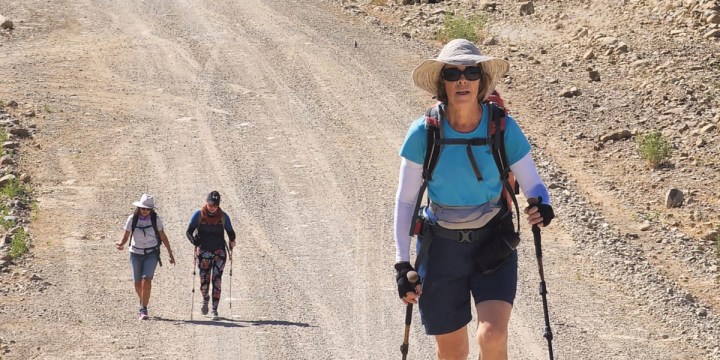
While watching the dying embers of 2022 amid electricity blackouts and political flameouts, one writer’s walking and hiking highlight of the previous year was quite easy to pick.
My 65th birthday gift to myself in 2022 was a 150km slackpack from Ruacana to Epupa Falls, with Wild Cherry Adventures. What a grand adventure the Kunene Camino turned out to be!
The Kunene (Cunene) River forms part of the northern border between Namibia and Angola, an area which, during this walk, was experiencing a prolonged drought. We would be walking east to west.
What is a camino? The word “camino” has been added to many rambles and hikes and is based on caminos in Spain and Portugal. It is a pilgrimage to some, a walk to others.
The 900km drive from Windhoek to Ruacana, in a Toyota Quantum, was an epic in itself. Even better was the company of 20 intrepid pilgrims and five highly capable service staff.
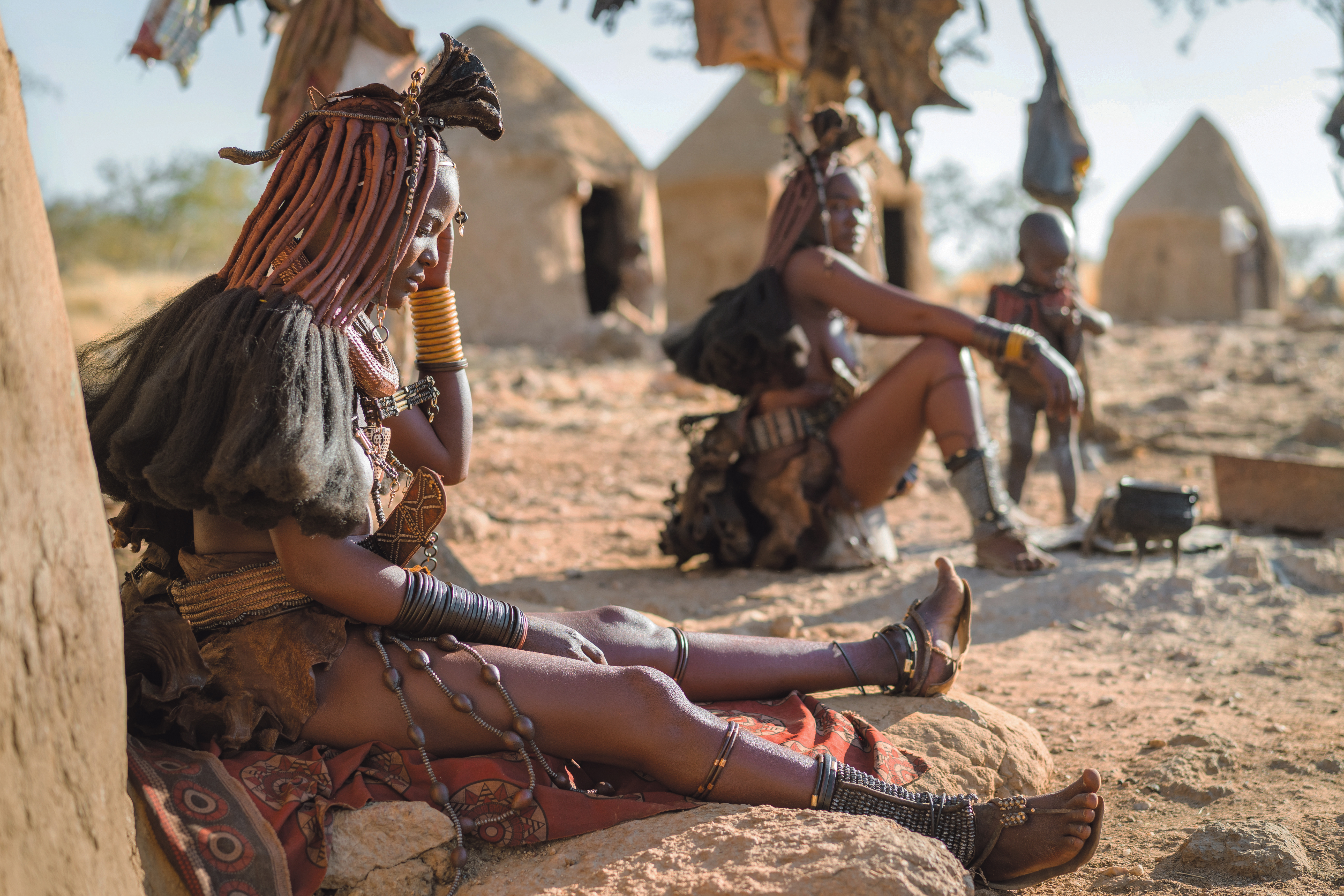
We encountered settlements of Himba people all along the way. (Photo: iStock)
The route was via Okahandja, Otjiwarongo and Outjo, the stop with a big supermarket for last-minute purchases. At Ruacana, our overnight stop and starting point, Beddingtons was the name of the game for an early start.
A mild uphill start got the heart hearting, blood blooding and corpuscles bustling. Most of the hike is along the river and occasionally on a gravel road, snaking in tandem westward to the Atlantic Ocean.
Before arriving at Mavingo Camp we spent time close to ovaHimba villages and settlements. It was heart-wrenching to see the people, more especially children, in such remote terrain and their living conditions. We had to make peace with the fact that this was their reality and we could not impose our reality on theirs.
Along the way were patches of land, bordering the majestic river, with mahangu fields, dried and withered after harvesting. I wondered how much they were able to harvest to feed themselves. Tall palms frequently provided a warm, subtropical feel.
We spent four of the nine walking days at formal or semiformal campsites and the other five at “wild sites” with no facilities at all. Organisation was superb, with all the necessities of life to keep us happy and full of good food made with love.
After the 23km of the first day, we tackled 15km on the second, passing many beautiful donkeys, some hobbled to prevent them from wandering.
As with all bigger hiking groups, the personalities of each person came to the fore as the step count mounted. I was attracted to the ones laughing the most while also trying to spend “me time” enjoying the views.
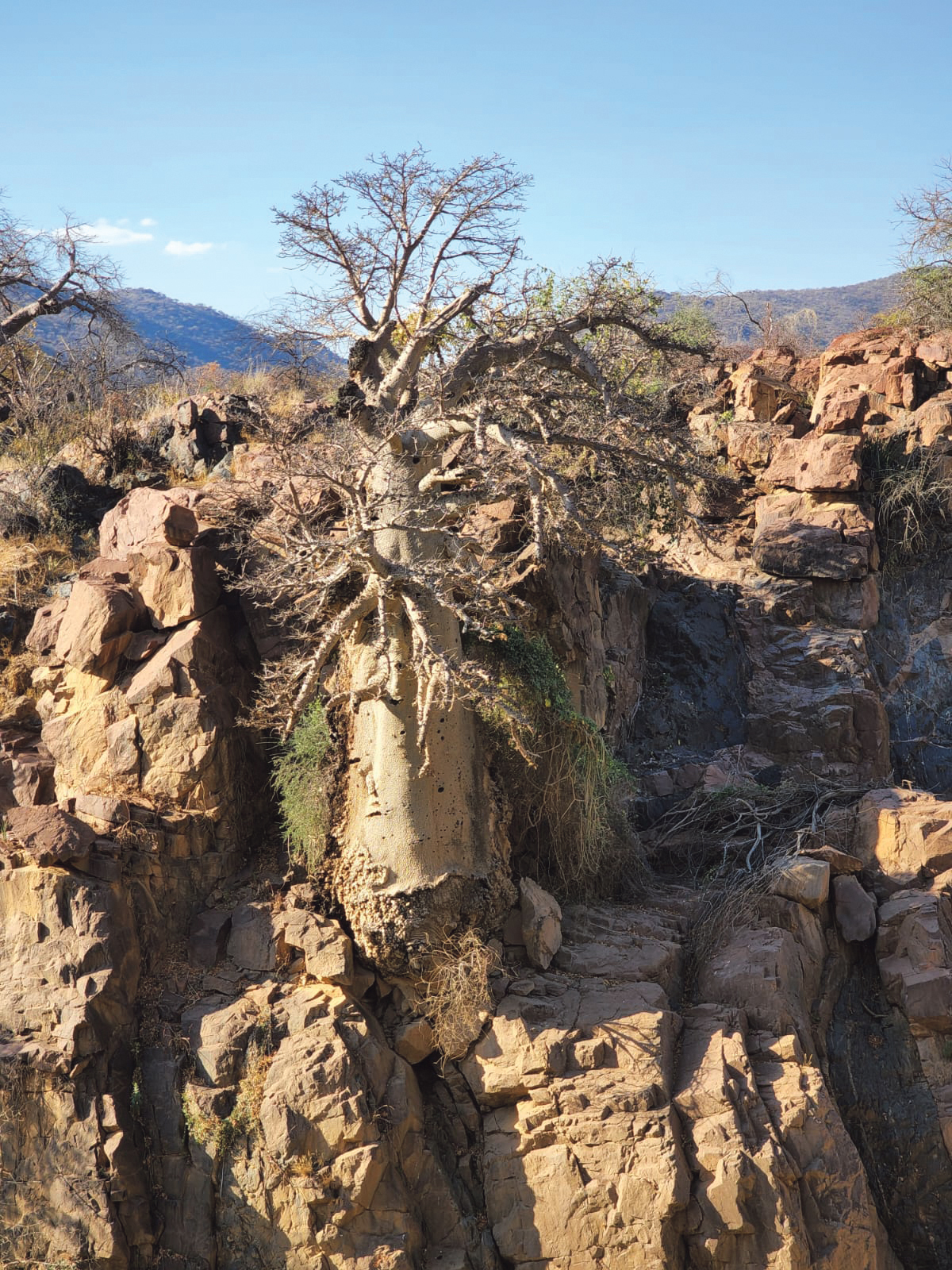
The vegetation features acacia trees, baobabs and various other indigenous plants. (Photo: Supplied)
It was bittersweet to meet domestic animals, particularly dogs. I wanted to take them into my care and smuggle them home with me. Others felt the same way but were more pragmatic about it. We temporarily adopted, and were adopted by, friendly mutts along the route.
Breakfast at the roadside after about two hours of walking was always a treat. Crocodiles dared not come close to us thanks to the joyful and boisterous laughter. By now, I had become “Lally”, which was how folk in this part of the world pronounced my name. Lallyboywalking: a domain name for a future website?
The vegetation was dotted with ana trees, a species of acacia, baobabs and other indigenous plants. Taller trees were festooned with small symbionts trying to get sunlight and spread spores and seed as far as they could.
Bird species were in abundance. Photographers in the group kept us alive with “Ooh, kyk daar!” But we did not see many smaller animals — besides the goats.
The ovaHimba people were welcoming but initially reticent about being photographed.
Read more in Daily Maverick: “At the heart of the Wild Coast are its people and their invaluable local knowledge”
Part of our expedition was distributing food hampers to settlements along the way and this, along with translation by our service staff, eased interaction with locals and oiled the wheels of photography. The kids loved seeing pictures of themselves.
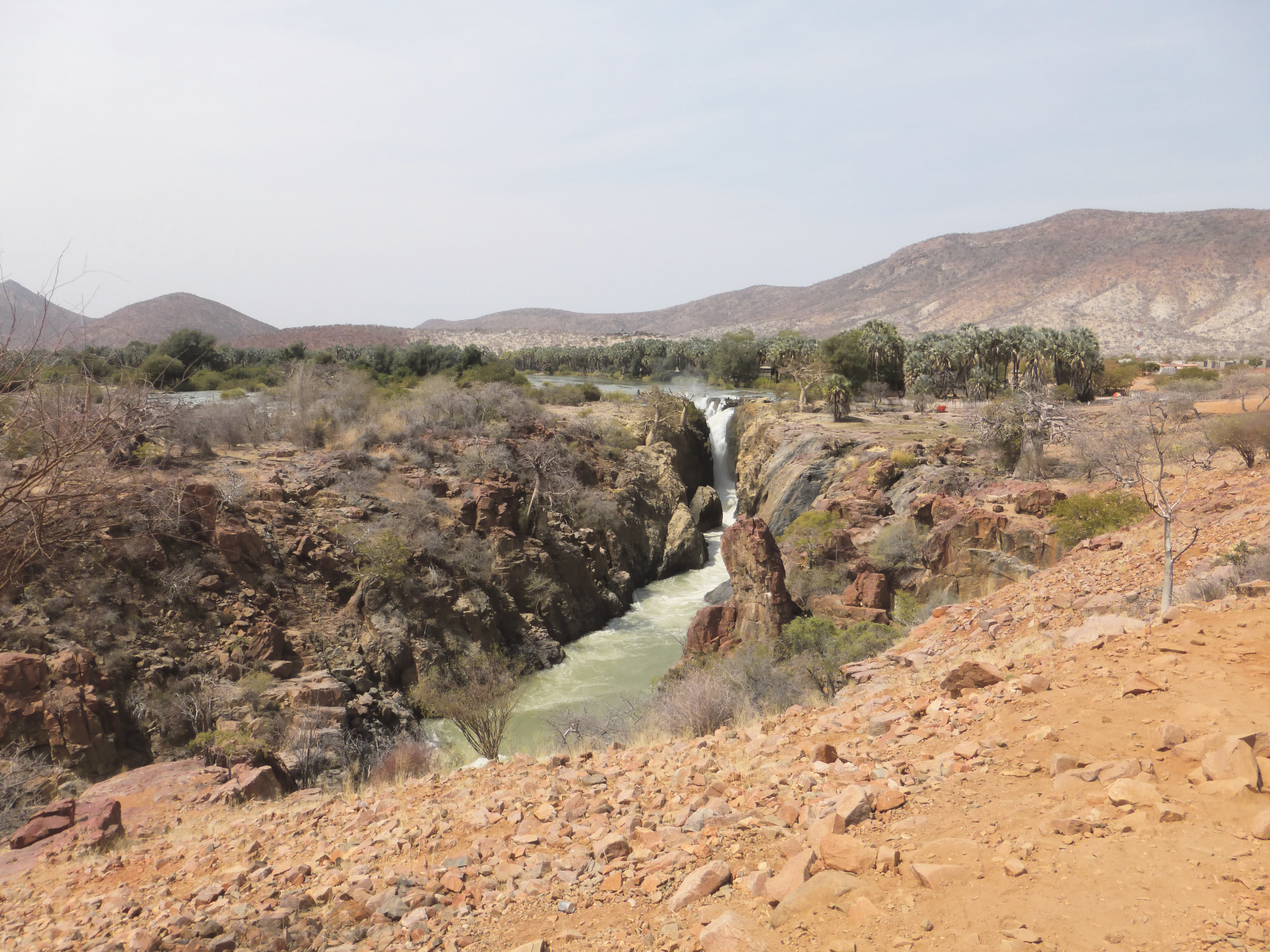
The sights and sounds of the Kunene River can be a life-enhancing experience. (Photo: Supplied)
The wide river is peaceful and green, hiding many things in its depths, and quite fast-flowing at times, even at its widest.
Wild camping means a pit toilet away from the dining site. My tent was removed to the “naughty corner” for noisier sleepers and my fear became that, in the dark, it might be mistaken for the loo.
Visit Daily Maverick’s home page for more news, analysis and investigations
The promise of fishing and crocodile viewing was in the air. So were vervet monkeys.
The best part of evenings, with African sunsets and braais, was the sharing of life stories, trials and tribulations. We always ended the evening with promises to walk strongly on the morrow.
I always say photographs cannot fully show the beauty, the undulations, of the land you walk through. These things are best conveyed in words.
Most of us kept using words and phrases such as “so beautiful” and “amazing”, but the emotions were genuine — the landscape was just that.
As we pushed further eastwards, the Himba locals were more traditional in terms of dress code and practices.
And the river slowly ran through it, carrying secrets and secretions, dead, alive, organic and inorganic.
One day’s 20km walk in the heat took the stuffing out of a few walkers, yet the physical test, combined with the beauty of the surroundings, allowed one to think about many issues.
My thoughts are often all about why? Why are we here; what are we here to do; who do we serve?
The latest theorising among our brethren in the field of cosmology is that we are possibly an algorithm in an experiment of some sort. A video game? If so, it’s one heck of a beautiful game.
Read more in Daily Maverick: “The call of the mild – of mice, men and tiny claws in the Tygerberg Nature Reserve”
On one new day, we walked past a settlement where pollution had reared its ugly head. It was sad. Himba children, in particular, elicited sympathy from the group.
Some kids seemed emaciated and malnourished to our city eyes. Most of their clothes were way beyond the “use by” date. Women in our group showed motherly traits whenever we came across little ones standing by the roadside, having been alerted of our approach.
After a long, sometimes testing, walk along the river, we arrived at local heaven under a huge tree 20m from the river. Was it close to a crocodile haven? We were brave enough to do some washing and brief dipping in fast-flowing places. Some locals were even skilfully crossing the river. No border posts for them.
On our fifth day of falling forward in a controlled fashion — which is what walking is — amazing experiences were starting to feel normal.
Maybe that’s something to avoid. We are here for the novelty of life, every day. As a group, we were now more cohesive in actions and conversations. We all wanted to see crocodiles but the only thing we saw were bright eyes in the dark when shining lights downward.
Being there reminded me of how tenuous and fragile life was. We had a war in Ukraine, Covid contrails, climate change and many other threats. Might these rural folk be more resistant to future catastrophes — due to their ignorance of them?
The beauty and the challenge of the walk went on, as did its spirituality and mysticism.
Read more in Daily Maverick: “Elim, the Moravian Church and brass bands”
Meeting and donating to the Himba was an admission of equality and respect. Feeding the pets was for many of us an act of love and compassion.
Every day, the clarion call to the angels (us) to spread their wings and wake up goes out like the Muslim call to prayer in the morning.
After a few cups of coffee we are exhorted to fly, even though some of us fluttered and staggered before hitting full flight. The golden nectar of the evening before sometimes took its toll.
I took to talking to my luggage and day pack in different tones, sometimes begging and sometimes querulous, or even tremulous. Get into your bag!
The Himba are attractive people. The whole area is too. I considered how difficult it would be for us to eke out an existence here, while the locals make do with what they have and seem happy.
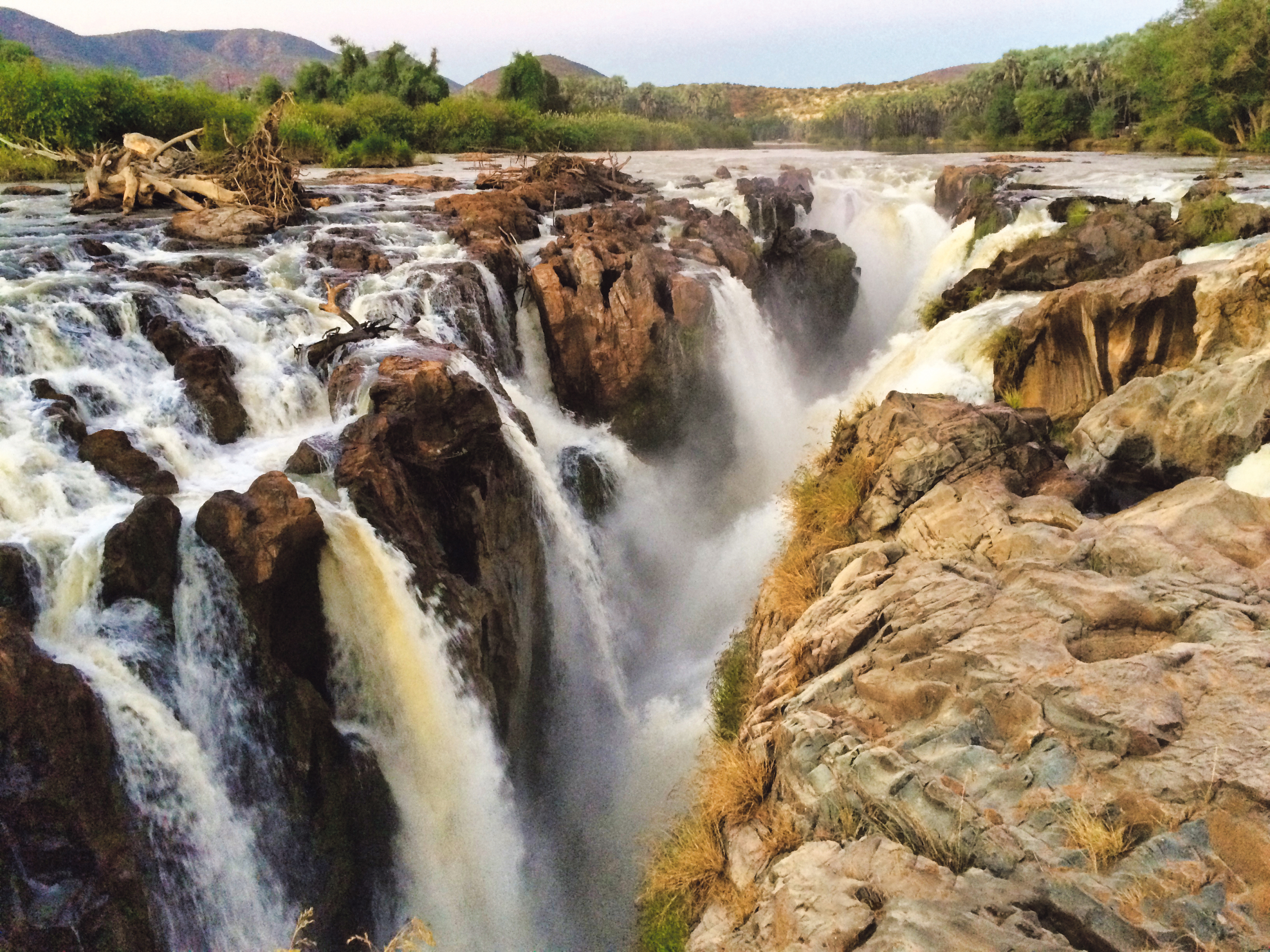
Epupa Falls on the Namibia-Angola border, the final destination of a memorable pilgrimage. (Photo: Supplied)
By day seven of the nine I had learnt a lesson: never walk around in the dark to relieve yourself using a red night light. You are bound to fall without visual clues.
Cornie Camp was a lovely, organised oasis with all amenities — a treat after wild camping. There was an honesty bar, free Wi-Fi and a solid sleep before the penultimate trek.
The last two days, especially the stretch after Swartbooisdrif, were tinged with sadness as we were coming to the end of an epic journey with sights, sounds and emotions recorded in our biological hard drives.
As we crested a rise we saw our destination: Epupa and its falls.
Epupa Falls and Epupa Lodge & Campsite is an amazing spot in this desolate part of the world. It stands out like a crown (thorny at some points) and is the only populated settlement for many, many kilometres.
Another typically stunning African sunrise complemented the sound of the waterfall as a conversational backdrop.
The river chattered and chortled along and, as I lay awake, I swear I heard human voices within the sounds of the water.
As we pitched in to pack for the trip back to Windhoek via Kamanjab, I felt it had been a life-enhancing adventure.
I came away with good friends and plans for future walks.
The next one? I suspect it is a 222km walk in Namibia. Join me! DM168
This story first appeared in our weekly Daily Maverick 168 newspaper, which is available countrywide for R25.








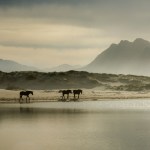
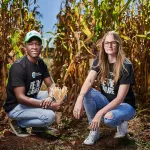









 Become an Insider
Become an Insider
Comments - Please login in order to comment.